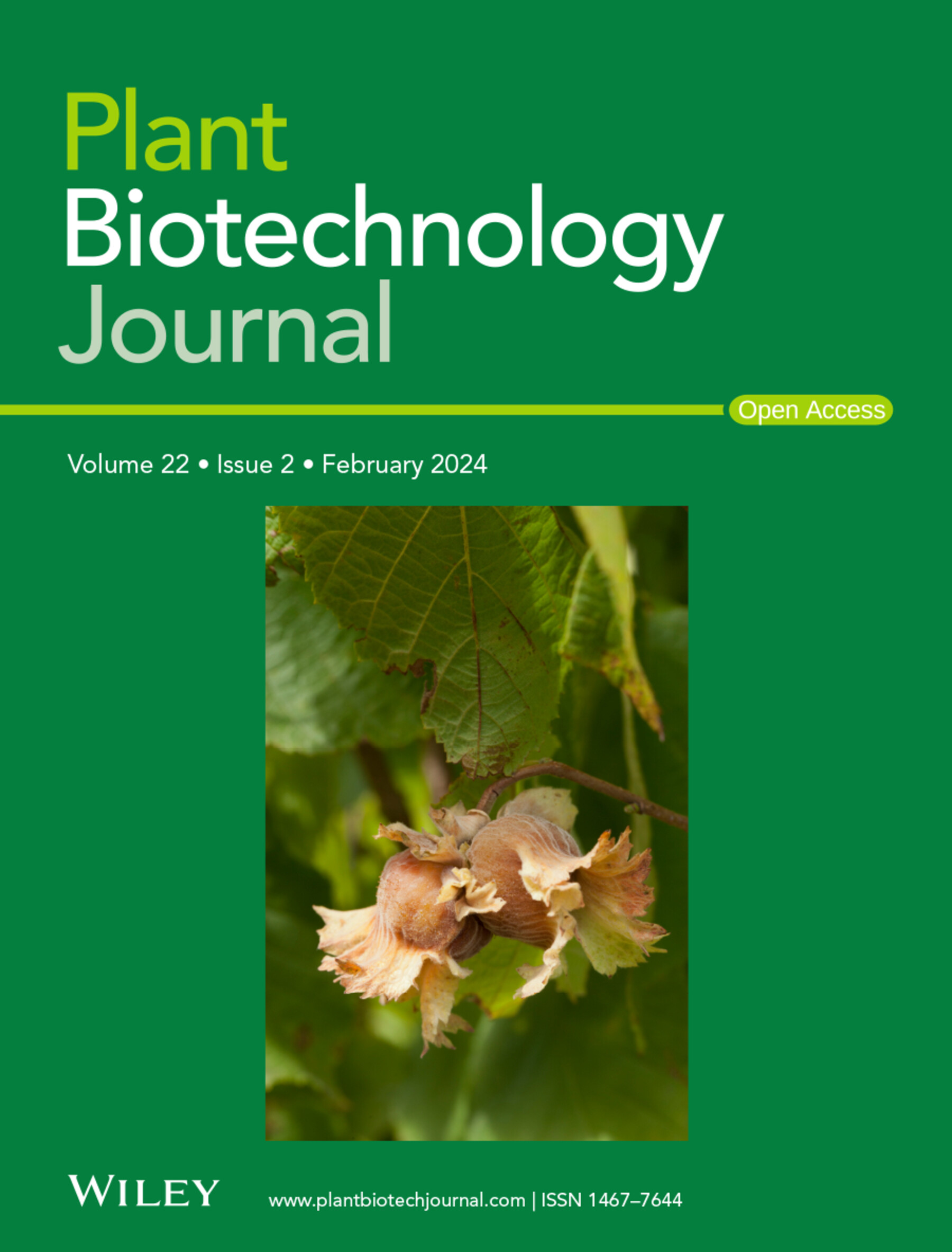Telomere-to-telomere genome assembly of linseed (Linum usitatissimum L.) for functional genomics and accelerated genetic improvement
IF 10.5
1区 生物学
Q1 BIOTECHNOLOGY & APPLIED MICROBIOLOGY
引用次数: 0
Abstract
Linseed (Linum usitatissimum L.), a member of the Linaceae family, is a versatile crop valued for its oil, fibre, nutritional and medicinal applications. Recognized as a superfood, linseed is rich in omega-3 fatty acid (~55%), lignans, high-quality proteins, dietary fibre and bioactive secondary metabolites. Previously published genome assemblies of linseed are quite fragmented and non-contiguous. In this study, we present a telomere-to-telomere (T2T) chromosome-scale genome assembly of the Indian linseed variety T397 using advanced sequencing approaches. The assembly comprises ~595 Mb of genomic sequences, with a scaffold N50 of 32.86 Mb, spanning 15 chromosomes, including 29 telomeres and 15 centromeres. A total of 34 572 protein-encoding genes were predicted with an average length of 2980.7 bp and an average of 5.0 exons per gene. Gene family analysis determines a considerable number of unique genes in linseed and its close relationship with Manihot esculenta and Ricinus communis. The higher expression of oleosin and FAD3 genes in linseed highlights their roles in oil accumulation and enrichment for omega-3 fatty acid. The metabolites found in the seeds were enriched for the biosynthesis of unsaturated fatty acids. Various potential key structural genes and transcription factors that regulate oil metabolism especially unsaturated fatty acids biosynthesis has been identified. Overall, the present study provides the potential genomic resources for accelerated genetic studies and improvement of linseed.用于功能基因组学和加速遗传改良的亚麻仁端粒-端粒基因组组装
亚麻籽(Linum usitatissimum L.)是亚麻科植物中的一员,是一种具有油脂、纤维、营养和药用价值的多功能作物。亚麻籽是公认的超级食物,富含omega-3脂肪酸(约55%)、木脂素、优质蛋白质、膳食纤维和生物活性次级代谢物。以前发表的亚麻籽基因组组装是相当碎片化和不连续的。在这项研究中,我们提出了端粒到端粒(T2T)染色体规模基因组组装的印度亚麻籽品种T397使用先进的测序方法。该组合包括约595 Mb的基因组序列,支架N50为32.86 Mb,跨越15条染色体,包括29个端粒和15个着丝粒。共预测34 572个编码蛋白的基因,平均长度为2980.7 bp,平均每个基因有5.0个外显子。基因家族分析确定了亚麻籽中有相当数量的独特基因,并确定了亚麻籽与Manihot esculenta和Ricinus communis的密切关系。亚麻籽中油蛋白和FAD3基因的高表达突出了它们在油脂积累和omega-3脂肪酸富集中的作用。在种子中发现的代谢物被富集用于不饱和脂肪酸的生物合成。各种潜在的关键结构基因和转录因子调控油脂代谢,特别是不饱和脂肪酸的生物合成。总之,本研究为加快亚麻籽的遗传研究和改良提供了潜在的基因组资源。
本文章由计算机程序翻译,如有差异,请以英文原文为准。
求助全文
约1分钟内获得全文
求助全文
来源期刊

Plant Biotechnology Journal
生物-生物工程与应用微生物
CiteScore
20.50
自引率
2.90%
发文量
201
审稿时长
1 months
期刊介绍:
Plant Biotechnology Journal aspires to publish original research and insightful reviews of high impact, authored by prominent researchers in applied plant science. The journal places a special emphasis on molecular plant sciences and their practical applications through plant biotechnology. Our goal is to establish a platform for showcasing significant advances in the field, encompassing curiosity-driven studies with potential applications, strategic research in plant biotechnology, scientific analysis of crucial issues for the beneficial utilization of plant sciences, and assessments of the performance of plant biotechnology products in practical applications.
 求助内容:
求助内容: 应助结果提醒方式:
应助结果提醒方式:


